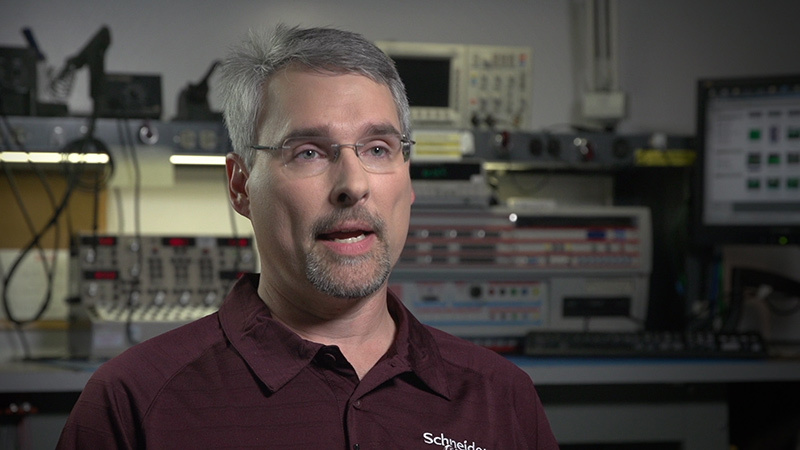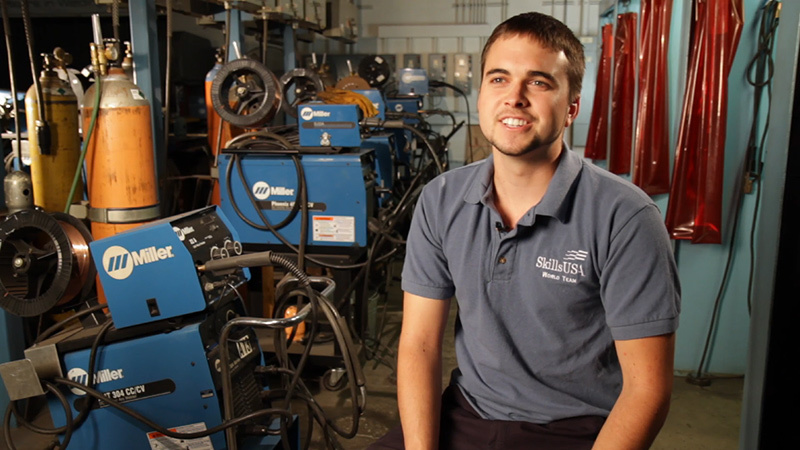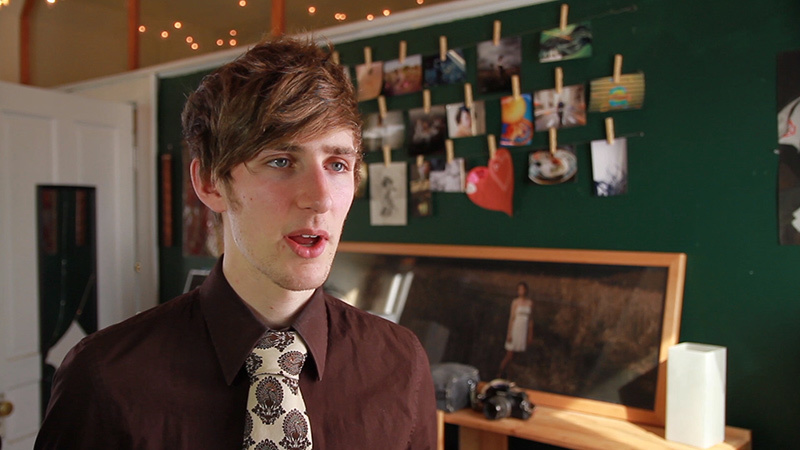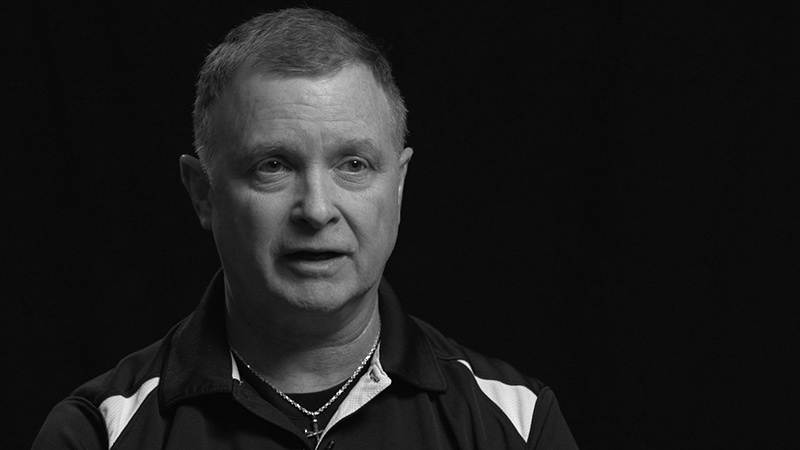In a previous article, I shared some tips on scouting locations for a documentary video shoot where interviews would be captured. The next step is to decide on a frame that complements your talent, topic, and tone. In this video, we discuss background elements we see in potential frames, any why one “look” might work better than another.
You wouldn’t just place a person against any random wall and start recording (at least I hope not!) for a myriad of reasons: light, audio, and you guessed it, feeling. The angles and shapes that are created in the background of an interview frame can impact the impression your interviewee gives to the audience, so they shouldn’t be glossed over when setting up.
Sometimes, you might be limited on what props or settings are available to work with, so at the very least, aim for a background that doesn’t distract or take away from what the interviewee is saying. For example, never put a fake plant behind someone, as leaves growing out of someone’s head are always a bad move. Looking for leading lines or natural placements in a composition can be a safe and often successful choice when you're working under time and budget restrictions.
In the video above, you'll see how we quickly looked at a several frames available to us in a single room, and what made us choose the final "look." Here are a few more examples where the background of an interview was chosen specifically, with an explanation of how we came to that particular decision.

For this industrial promotional film, several engineers were interviewed who specialized in electronic repairs. It was an easy choice to interview them in front of a workbench that had all manner of tools, instruments, and other electronic gear on display, because it spoke to their technical background. We chose this particular frame because there was some natural background lighting which added some depth and a note of color, plus the horizontal lines added a bit of stability to the frame, which we thought was a good feeling to have when trying to appeal to a customer base to make them feel secure in their choice of this company for their repair needs.

An exceptional welding student was the subject of a short documentary piece we worked on many years ago, and I recall picking this frame in a large welding lab because of the converging elements that led to a vanishing point, which seemed to be an ideal spot to place our subject. The eye naturally takes itself to the position of the subject.

This is a perfect example of not having much of a setting to work in and limited time. We interviewed a medical professional to speak about the merits of physical activity for a promotional video for a health and wellness center. We did not have time to travel to his office to film him there (which could enhance credibility and the understanding that he is a professional) or bring in workout equipment to stage behind him (to attribute him to exercise). In fact, we had to film four interviews back to back in the same space, so we shot some with the wall showing and did this one on gray. We decided to go with a dark gray muslin backdrop as a safe choice. It looked different from all of the other interviews we shot on a different color palette and left little to distract. It added a more “direct” tone to his interview. We did ask him to wear a stethoscope around his neck for the interview, but not a lab coat, which he said he didn’t normally wear anyway.
The point of all of this is that while hearing someone speak, you can sometimes gather an additional understanding of either the subject or tone or at the very least, make the composition pleasing to the eye. When you see an office setting, your brain understands that the person is likely a professional in their field, an administrator or other expert in a particular regard. It can add credibility to see a person in that kind of a setting. A flag could symbolize political affiliation. Old photos could carry historical meaning. These are the obvious examples. What’s less obvious and more subconscious is when different lighting styles are used to enhance drama or perhaps ease tension when dealing with delicate subject matter. A low contrast, dark background lighting could perhaps create a more intimate tone, while a high contrast and dark background might create drama.

When interviewing photographer Rob Woodcox, we placed him on a background that was decorated with his work, and earth tones were present in the wood frames and wall color, which all lent themselves to the surreal, naturalistic styles he often conveys in his photography. The out-of-focus lights were a perfect touch to subtly complement the whimsical, sometimes curious nature of Rob and his images.
Books on a shelf may suggest that someone is well read or works in education, shooting an interview at an outdoor location could attribute someone to something that has to do with the natural world, and putting up black can add to the seriousness or potential drama of a topic. Here’s a frame from a short video about at-risk youth struggling at school, and the programs that helped them eventually graduate and go on to college.

Using a completely black frame made it easy to shoot, but that wasn't the reason for it. We felt that it really worked with the black and white style to drive emotional impact in the stories that were told.
If you’ve ever studied color theory, you'll know there are a lot of things that can be done with background color splashes to create desired moods and feelings with imagery; this also applies to emotional testimony in interviews! This doesn’t mean you have to add lights and colored gels all of the time; in some cases, a location may present natural notes of color and texture that you can use to enhance how you would like your interviewee to come across to the audience.
Again, you might not have the time or resources available to make decisions like this for every interview you shoot, but it is something that shouldn't be overlooked when you do have the budget to craft really nice interview videos. With today's cameras, it's very easy to set a wide aperture and throw the background out of focus, making your interviewee the obvious subject, separated from the background merely through a shallow depth of field, but even still, fuzzy background elements like lines, lights, windows, and colors will all affect the final image. Following the rule of thirds for look-space and placement in the composition is a great place to start, but moving beyond that and experimenting is where you can find some really exceptional frames for your interviews.
If you found this material interesting or useful, consider checking out the e-book, "Tips for Shooting Professional Video Interviews," where we discuss techniques like these and other considerations for crafting great looking and sounding documentary interview productions.




To save time for you and HR-managers.
You do not need to go to a meeting in the office of the company, and they can more effectively and quickly select candidates and invite them to the next stage of selection. In case an interview by phone is required, it will be shorter and clearer.
What questions do I need to answer?
The questions are specific to the company. But, most likely, they will concern the following topics:
- Motivation.
- Select a position or department.
- Skills and competencies.
How to better prepare for VCV?
1. Work out each of the topics. For 15-40 seconds, allocated to read the question, you can not come up with and structure the answer, if you did not do it in advance.
2. Study information about the company, its market segment, customers, services or products that it offers. Look at the statistics. Have a clear idea of its difference from competitors.
3. Understand what position you want to go to. Find out what the department is doing, what its real specifics are. Think about what skills you will need to successfully cope with responsibilities, and which ones you already have.
4. Rehearse the answers to each topic's questions. Write yourself to the camera. Look. Make adjustments. Achieve a clear logic and confident speech. It is important that what you like and how you like, you like it yourself.
5. Think about your appearance. Do not wear a strict suit, but do not relax - you do not need to record video in the kitchen in a wiped home t-shirt. Bring yourself in order, comb your hair, shave. You should look neat.
6. Choose the right background. The most adequate is a monophonic wall. You do not need to shoot VCV on the background of carpets, posters and uncleaned rooms.
7. Be a loyal company well. Show this through your motivation, not the presence of branding elements in the frame. Do not put a camera in front of the camera or place banners with a logo on the background.
8. Record video when there is no one in the room. Children, girls, young people, parents and pets should not distract you from the answers and especially appear in front of the camera.